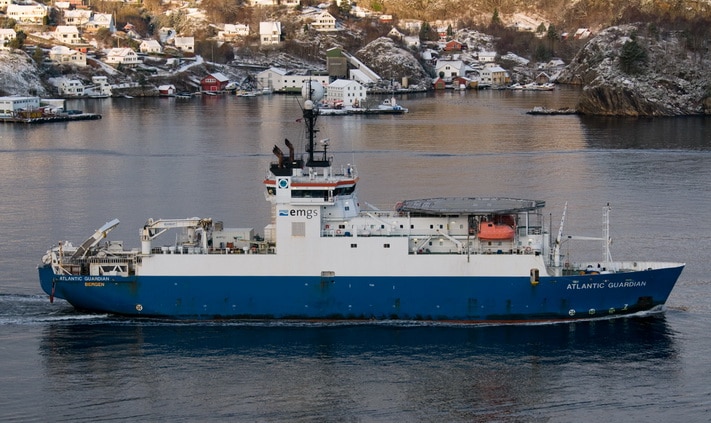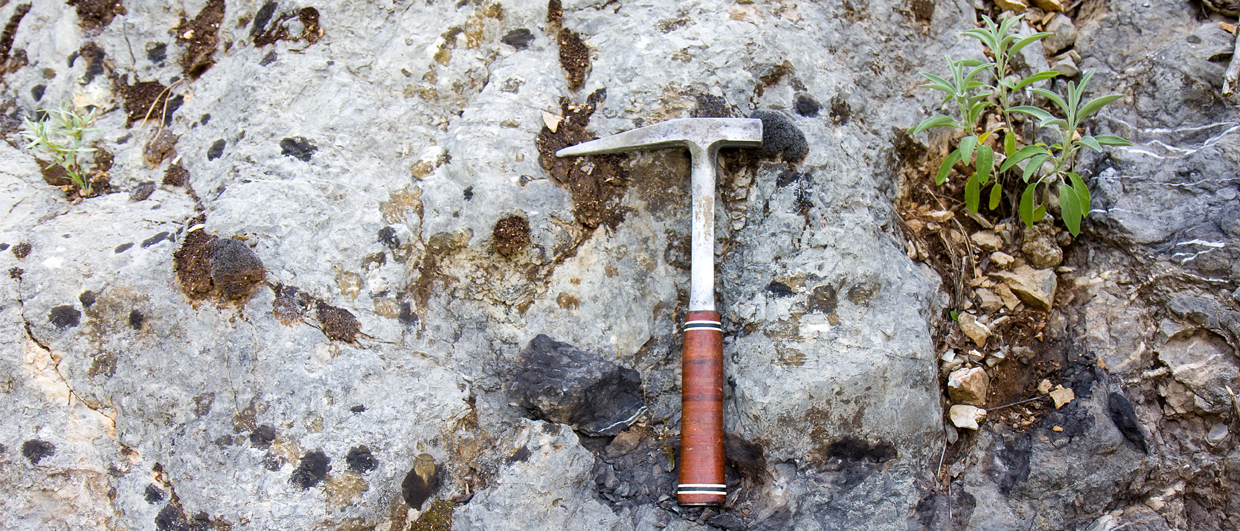Senegal: Still Looking for the ‘Big One’
“We first found oil in Senegal back in 1961 – the Diam Niado field,” says Joseph Medou, Exploration and Production Director for Petrosen, Senegal’s National Oil Company. “And we have Dome Flore, a huge heavy oil field in shallow waters straddling our border with Guinea Bissau, as well as a number of onshore gas fields, so we have ample evidence of working petroleum systems. We’re just waiting to find the ‘big one’ – it’s out there somewhere!”
One well per 1,600 km
The first seismic surveys in Senegal, both on and offshore, were undertaken in the 1950’s, and hopes must have been high in 1954, when the very first well drilled onshore had gas shows. Over the next few years several minor gas discoveries were made, including the Diam Niadio field, which produced 7.6 Bcf of gas from 1961 until it was shut-in in 2000, but nothing of real significance was found. This pattern continued as onshore exploration slowed down over the next decades, with only small marginal discoveries, mostly in the vicinity of Dakar. These included Petrosen’s 1997 discovery, Gadiaga, about 60 km north-west of Dakar.
Offshore seismic exploration also started in the 1950’s, but the first offshore well was not drilled until 1966, in the Casamance region in southern Senegal, south of The Gambia, the country which almost splits Senegal in two. In 1967 the Dome Flore field was discovered in this area, containing an estimated one billion barrels of heavy oil which has yet to be exploited.
“In total 154 exploration wells have been drilled in the whole of Senegal, including only 45 offshore,” explains Joseph. “That’s an average of about one well for every 1,600 km2 – and most of them only reached shallow depths. Basically, the Senegal Basin remains underexplored, with plenty of potential.”
Palaeozoic Potential?
Senegal lies in the centre of the MSGBC (Mauritania – Senegal- Gambia – Bissau – Conakry) Basin, which covers much of the west coast of West Africa, extending from the ancient Reguibat shield in north-west Mauritania to the Guinea fracture zone in the south. This is a passive continental margin basin, much of it offshore, with the widest onshore part in Senegal. It can be divided into a number of sub-basins, including the Senegal Basin, and has substantial thicknesses of Mesozoic and Tertiary sediments overlying older Palaeozoic rocks, which in turn overlie Precambrian basement.
“So far, exploration in Senegal has targeted the Mesozoic and Tertiary, leaving the Palaeozoic essentially unexplored,” says Joseph. “In the shallow offshore and onshore coastal regions, where most of the exploration has been concentrated, the Palaeozoic pre-rift sediments are deeply buried beneath about 5km of younger rocks. They form a 100 km wide north-south trending sub-rift basin in the north-western part of Senegal, broadening into a wider and thicker layer in the south-west, where the only wells to penetrate these rocks, Diana-Malari and Kolda, found formations of Ordovician, Silurian and Devonian age.”
“Our preliminary studies concentrating on the Palaeozoic have identified a number of structural traps in formations of Ordovician to Carboniferous age,” Joseph continues. “These include tilted fault blocks, four-way closures and faulted anticlines, all lying below the base Mesozoic unconformity at depths of between 1,850 and 5,000m.”
Excellent Silurian Source Rocks
Potentially, the most important contribution these older rocks provide is as excellent source rocks, particularly in the Silurian Buba shale. This bears strong similarities to the North African Lower Silurian Tanezzuft Formation, the prolific source for many accumulations, such as Hassi Messaoud in Algeria. The oil-prone graptolitic Buba shale may be as much as 400m thick with TOC contents of 5.5% in the southern region of Senegal. Maturity levels vary, and would appear to be dependent on the presence of later intrusions or high geothermal paleogradients close to major thrust zones.
An additional Palaeozoic source is thought to be the Upper Permian to Lower Triassic lacustrine shale that underlies the thick syn-rift salt unit. This section does not outcrop in the Senegal Basin, and drilling has not penetrated it, so it is completely unexplored at the moment.
The Palaeozoic contains many sandy potential reservoir horizons with good porosity, and the hydrocarbons may also have migrated up dip and along faults into younger rocks.
Promising Mesozoic Petroleum Systems
The Mesozoic rift basin developed as the Atlantic formed and America and Africa separated in the Late Triassic. The syn-rift does not outcrop in Senegal, but is represented offshore in the southern Casamance region by widespread evaporite sequences which have developed into large salt diapirs. The central Senegal Basin has a thinner syn-rift section, probably consisting of continental clastics and organic-rich lacustrine shales, which is only thought to be present in the western part of the country, buried to a depth of over 4,000m.
As rifting continued in the Jurassic and Early Cretaceous, large volumes of carbonate sediments built up into a wide platform, increasing in thickness from east to west across the Senegal Basin. These form one of the main, although underexplored, reservoir horizons in Senegal, showing porosities of between 10 and 23%. They are overlain by thick marine shales – good seal horizons – interbedded with marginal marine sand stones, deposited after the Atlantic opened and the land was inundated.
As the Cretaceous transgression reached its greatest extent in the Turonian, about 90 MA, a widespread layer of black shales, 50 to 150m thick, often bituminous, were deposited. These form an important hydrocarbon source in the Senegal basin, especially in areas such as the Casamance region where salt diapirism has resulted in a high geothermal gradient, or offshore Dakar, where later volcanism has had a similar result. Turonian shales form the source for the 80 MMbo Chinguetti field, offshore Mauritania.
“The potential of the Turonian is shown in the Dome Flore field, where a billion barrels of heavy oil are reservoired in Oligocene oolitic limestone, which has porosities of 20 to 30%. Similar hydrocarbons were found at the nearby Dome Gea and Boabab wells, indicating that this heavy oil field could cover a wide area,” adds Joseph. “The Turonian also sourced hydrocarbons in Cretaceous reservoirs in the Diam Niadio and Gadiaga fields, near Dakar, as well as the small amount of light oil found in Maastrichtian sands in the Dome Flore reservoirs in the offshore Casamance region.”
Potential traps in the Mesozoic-Tertiary Senegal Basin are varied, and include salt-related structures, growth faults, slope truncation traps along the present shelf edge, structures related to intrusions, Mesozoic pinch-outs and Lower Cretaceous-Jurassic carbonate bank plays along the shelf edge and slope. Many of these remain to be explored.
Potential in deepwater fans
Petrosen is encouraged by the fact that companies have begun to show renewed interest in Senegal, and there has been an increased uptake of acreage, particularly offshore.
First Australian Resources (FAR), for example, bought into the Rufisique, Sangomar and Sangomar Deep blocks south-west of Dakar in 2006, in water depths greater than 2,000m in places. “We have already acquired over 2,000 km of 3D seismic and have undertaken a CSEM program,” explains FAR CEO Michael Evans. “This has helped us identify Turonian-sourced multiple Santonian fan systems with stacked amplitude anomalies, possibly containing as much as 180 MMbo, as well as a large Albian shelf edge closure with potentially more than 1 Bbo in place – a completely untested play in Senegal. We are now actively looking for a partner to join us in drilling a well on these exciting prospects.”
The first deepwater drilling in the region is actually due to commence early in 2011, when Ophir Energy will drill the Kora prospect in 2,600m water depth, in the AGC Profond PSC, an area jointly administered by Senegal and Guinea Bissau. The prospect is a large four-way dip closure with Late Cretaceous reservoir potential, estimated to contain over 400 MMboe recoverable. According to Ophir’s partner Rocksource, the prospect was substantially upgraded after CSEM analyses, and the chance of success for the well is now estimated to be above 50%. Seismic records show deepwater turbidite sandstone reservoirs and a complex structural history with dynamic salt, and the area contains multiple play intervals and has 17 prospects mapped within its limits.
Looking forward
Gadiaga Ouest 1 is the eighth well to be drilled on the producing Gadiaga Field, 60km north of Dakar. (Source: Jane Whaley)The only hydrocarbon production underway in Senegal at the moment is from the Gadiaga Field, about 60km north-east of Dakar, which has produced a total of about 3.3 Bcfg (93 MMm3g) so far. “At present we produce 2.5 MMcfg or 70,000 m3g per day,” says Joseph. “This is only enough for 12 MW of power, but we could produce nearer 10 MMcfg (300,000 m3g, 1.7 Mboe) and the need for electricity is high. We currently import about 27,000 bopd – we really need to find more hydrocarbons.”
“We suspect that our relative lack of success in hydrocarbon production to date is not due to geology or migration, but because many wells were drilled off structure, as they were positioned using poor quality vintage 2D seismic. There has been little exploration for the last decade, and not a single offshore well. However, data is being reprocessed and, with the help of new processing and interpretation techniques, interesting structures are being revealed, particularly in deeper Mesozoic horizons and in the Palaeozoic. We now need a deepwater well to explain some of these structures.”
“In Petrosen, we believe that Senegal has excellent hydrocarbon potential both on and offshore, and we are looking forward to a promising future,” Joseph Medou concludes.


8-9-10_1130x600.jpg)
a_1130x600.jpg)



